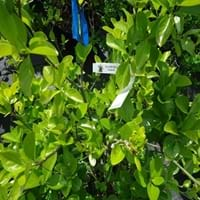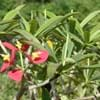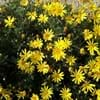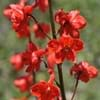Life Span
Perennial
Perennial
Type
Shrub
Bulb or Corm or Tuber
Origin
Europe, Western Asia
Hybrid origin
Types
Not Available
boissieri , cupanii , hungaricum , kesselringii
Number of Varieties
Not Available
Habitat
Floodplains, Open Forest
Temperate Regions
USDA Hardiness Zone
4-7
Not Available
AHS Heat Zone
7-1
Not Available
Sunset Zone
1a, 1b, 2a, 2b, 3a, 3b, 4, 5, 6, 7, 8, 9, 14, 15, 16
21,22
Habit
Oval or Rounded
Clump-Forming
Flower Color
Yellow green
Purple, Violet
Flower Color Modifier
Not Available
Bicolor
Fruit Color
Orange
Not Available
Leaf Color in Spring
Green
Green
Leaf Color in Summer
Green
Light Green
Leaf Color in Fall
Yellow, Red, Yellow green
Several shades of Green
Leaf Color in Winter
Not Available
Light Green
Leaf Shape
Ovate
Long Linear
Plant Season
Fall
Spring, Fall
Sunlight
Full Sun, Partial Sun, Partial shade
Full Sun, Partial Sun
Type of Soil
Clay, Loam, Sand
Loam
The pH of Soil
Acidic, Neutral, Alkaline
Acidic, Neutral
Soil Drainage
Well drained
Well drained
Bloom Time
Late Spring
Late Summer, Early Fall
Tolerances
Drought
Drought
Where to Plant?
Ground
Ground
How to Plant?
Seedlings, Transplanting
Divison, From bulbs, Seedlings
Plant Maintenance
Medium
Medium
Watering Requirements
Keep the ground moist but not water-logged, Requires a lot of watering, Requires regular watering, Requires watering in the growing season
Keep ground moist
In Summer
Lots of watering
Lots of watering
In Spring
Moderate
Moderate
In Winter
Average Water
Average Water
Soil pH
Acidic, Neutral, Alkaline
Acidic, Neutral
Soil Type
Clay, Loam, Sand
Loam
Soil Drainage Capacity
Well drained
Well drained
Sun Exposure
Full Sun, Partial Sun, Partial shade
Full Sun, Partial Sun
Pruning
Prune in late winter, Prune in spring, Remove dead leaves, Remove shoots
no pruning required
Fertilizers
All-Purpose Liquid Fertilizer
All-Purpose Liquid Fertilizer
Pests and Diseases
Red blotch
Dry root rot, Pest Free
Plant Tolerance
Drought
Drought
Flowers
Insignificant
Showy
Flower Petal Number
Single
Single
Foliage Texture
Medium
Coarse
Foliage Sheen
Glossy
Glossy
Attracts
Birds
Whiteflies
Allergy
Asthma
Poisonous to grazing animals
Aesthetic Uses
Beautification, Landscape Designing, Showy Purposes
along a porch, deck or patio, Borders, Mixed Border, small hedge
Beauty Benefits
Not Available
No Beauty Benefits
Environmental Uses
Air purification
Air purification
Medicinal Uses
Not Available
anti rheumatic, cathartic
Part of Plant Used
Fruits, Seeds
Root
Other Uses
Decoration Purposes, Showy Purposes, Used as Ornamental plant
Showy Purposes
Used As Indoor Plant
No
No
Used As Outdoor Plant
Yes
Yes
Garden Design
Hedges, Screening, Wind Break
Container, Cutflower, Foundation, Lawns and Turf, Mixed Border
Botanical Name
EUONYMUS europaeus
COLCHICUM 'Lilac Wonder'
Common Name
European spindle
Hybrid Autumn Crocus, Hybrid Meadow Saffron
In Hindi
आम धुरी
meadow saffron
In German
gemeinsamen Spindel
Herbstzeitlose
In French
axe commun
Colchique d'automne
In Spanish
husillo Común
Estado de conservación
In Greek
κοινή άξονα
meadow saffron
In Portuguese
eixo comum
Colchicum autumnale
In Polish
wspólna wrzeciona
Colchicum autumnale
In Latin
commune fusum
autumnale
Phylum
Tracheobionta
Tracheophyta
Class
Magnoliopsida
Magnoliopsida
Order
Celastrales
Liliales
Family
Celastraceae
Liliaceae
Clade
Angiosperms, Eudicots, Rosids
Angiosperms, Monocots
Tribe
Not Available
Not Available
Subfamily
Not Applicable
Not Available
Number of Species
Not Available
Not Available
Properties of Common Spindle and Meadow Saffron
Wondering what are the properties of Common Spindle and Meadow Saffron? We provide you with everything About Common Spindle and Meadow Saffron. Common Spindle doesn't have thorns and Meadow Saffron doesn't have thorns. Also Common Spindle does not have fragrant flowers. Common Spindle has allergic reactions like Asthma and Meadow Saffron has allergic reactions like Asthma. Compare all the properties and characteristics of these two plants. Find out which of these plant can be used as indoor plant. If you are interested to decorate your house and garden, find out aesthetic uses, compare them and select the plant which will beautify your surrounding. Along with beautification, try comparing medicinal and edible uses of Common Spindle and Meadow Saffron and you can choose the plant having best and most benefits.
Season and Care of Common Spindle and Meadow Saffron
Season and care of Common Spindle and Meadow Saffron is important to know. While considering everything about Common Spindle and Meadow Saffron Care, growing season is an essential factor. Common Spindle season is Fall and Meadow Saffron season is Fall. The type of soil for Common Spindle is Clay, Loam, Sand and for Meadow Saffron is Loam while the PH of soil for Common Spindle is Acidic, Neutral, Alkaline and for Meadow Saffron is Acidic, Neutral.
Common Spindle and Meadow Saffron Physical Information
Common Spindle and Meadow Saffron physical information is very important for comparison. Common Spindle height is 370.00 cm and width 900.00 cm whereas Meadow Saffron height is 12.70 cm and width 20.30 cm. The color specification of Common Spindle and Meadow Saffron are as follows:
Common Spindle flower color: Yellow green
Common Spindle leaf color: Green
Meadow Saffron flower color: Purple and Violet
- Meadow Saffron leaf color: Green
Care of Common Spindle and Meadow Saffron
Care of Common Spindle and Meadow Saffron include pruning, fertilizers, watering etc. Common Spindle pruning is done Prune in late winter, Prune in spring, Remove dead leaves and Remove shoots and Meadow Saffron pruning is done no pruning required. In summer Common Spindle needs Lots of watering and in winter, it needs Average Water. Whereas, in summer Meadow Saffron needs Lots of watering and in winter, it needs Average Water.





